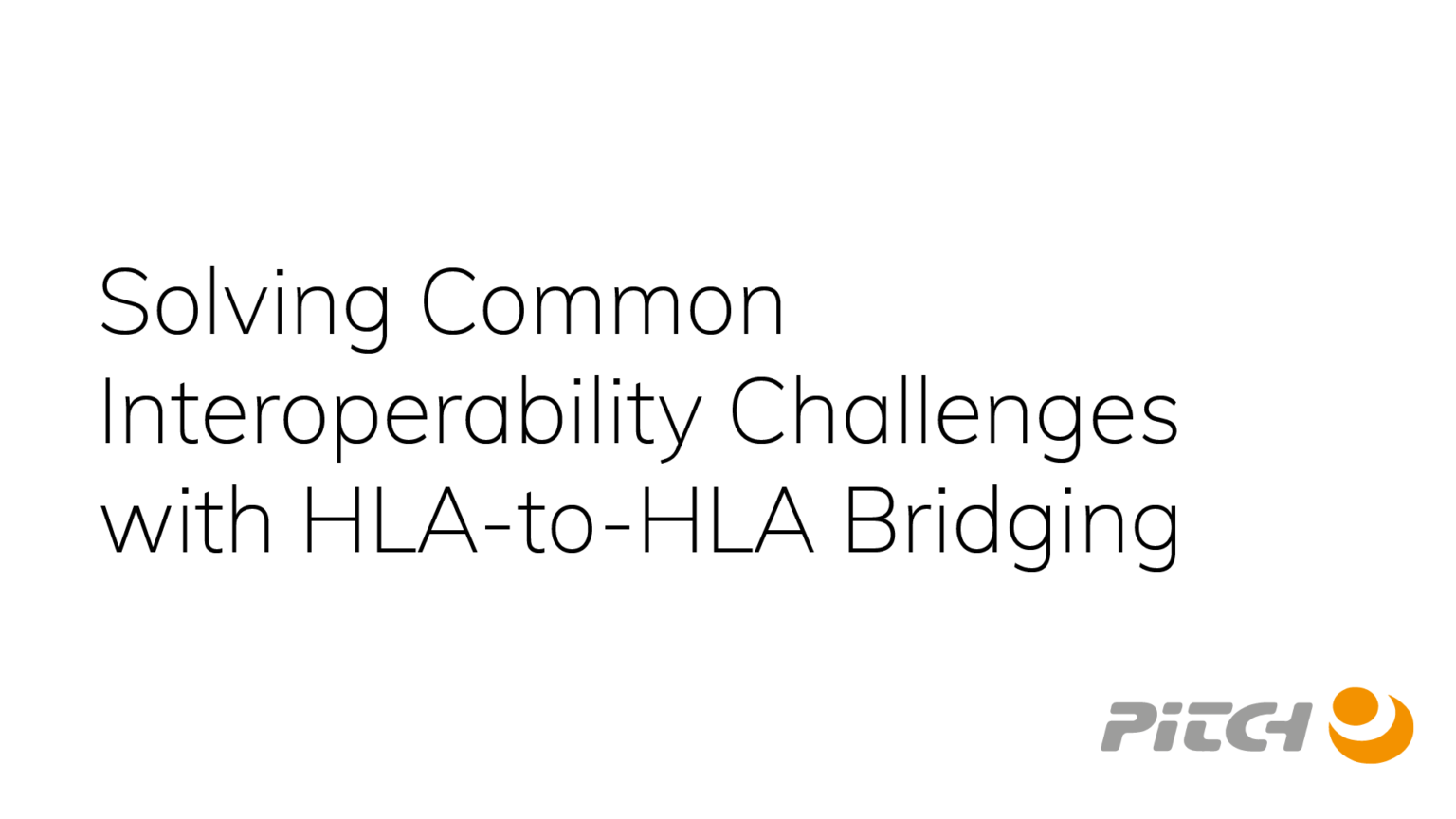ABSTRACT: Recently there has been a lot of focus on gateways between different simulation standards, like HLA, DIS and TENA, for example as part of the LVC-AR work and several SISO working groups. Bridging
between different HLA federations has received little attention. Still, this is a highly useful technique for solving many interoperability issues. It is currently in use in several large federations.
We argue that there are two categories of HLA-to-HLA bridging: quick fixes and long-term architectures. A sample quick fix is when an HLA federation with a large number of objects is partitioned so that one of the
partitions includes a subset of the objects. This prevents federates with limited capacity from being overloaded or crash.
Another case is when federates that use a slightly different FOM or use a slightly different data format are joined to a separate federation, that connect to the main federation using an HLA-to-HLA bridge. In some federations different federates may also use different RTI implementations. In these cases the long-term solution is to correctly adapt all of the federates to the same federation agreement and FOM or to use more HLA
services, like DDM. This may not always be possible, for example because of time constraints, which makes HLA-to-HLA bridging the only viable solution.
One long-term architectural use case is when a federation is partitioned into two federations with different security levels. The HLA-to-HLA bridge filters and modifies data before sending it from the higher to the lower security domain. Another case is hierarchical federations, where a number of sub-federations connect to a super-federation. This is useful where the FOM in the super-federation is on a more aggregated level than in the sub-federations. It is also useful for fault-tolerance in highly distributed federations where local sub-federations can keep running even when the super-federation is unavailable.
This paper presents and discusses a number of use cases, including experiences from real life federations and implementations of HLA-to-HLA bridges
Authors: Björn Möller, Fredrik Antelius, Martin Johansson, Linus Lindholm, Per-Philip Sollin
Publication: Proceedings of 2014 Fall Simulation Interoperability Workshop, 14F-SIW-064, Simulation Interoperability Standards Organization, September 2014.

